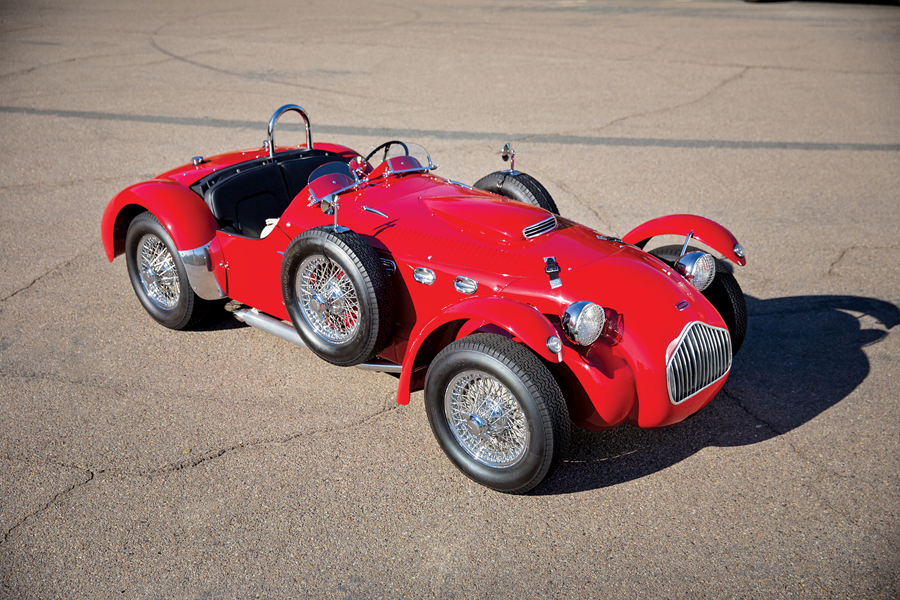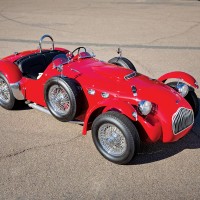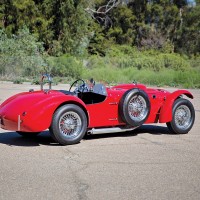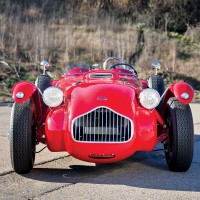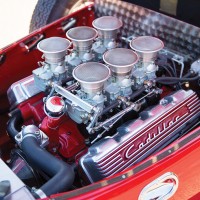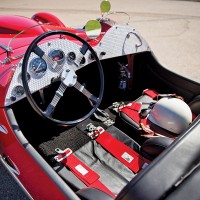SCM Analysis
Detailing
| Vehicle: | 1952 Allard J2X |
| Years Produced: | 1952–54 |
| Number Produced: | 83 |
| Original List Price: | £1,713 ($2,500) |
| SCM Valuation: | Median sale to date, $225,000; high sale, $675,000 |
| Tune Up Cost: | $500 |
| Chassis Number Location: | Plate on firewall |
| Engine Number Location: | Varies with engine type and model |
| Club Info: | Allard Owners Club |
| Website: | http://www.allardownersclub.org |
| Alternatives: | 1948–56 Frazer-Nash Le Mans Replica, 1953 Kurtis-Kraft KK500, 1951 Cunningham C2R |
| Investment Grade: | B |
This car, Lot 25, sold for $451,000, including buyer’s premium, at Gooding & Company’s Scottsdale Auction on January 29, 2016.
How can you make an impression in the rarified atmosphere of one of the many fashionable long-distance tours organized for classic cars and their owners?
One sure-fire strategy is to drive an Allard. This aluminum-paneled British creation powered with a big American V8 engine will be as rare as any French-curved rolling sculpture, capable of driving the wheels off pretty much any Italian automobile, and as bare-bones unrefined in sound, comfort and handling as any vintage American hot rod in the group.
Driving an Allard will mark you and your hardcore co-driver as serious enthusiasts who are more interested in the adrenaline rush of open back roads than in the envy of Rodeo Drive parking valets.
In fantastic, road-ready shape
One fortunate buyer may have had all this in mind when bidding on Lot 25 at the Gooding Auction in Scottsdale. As presented, the car looks as if it just came from final polishing of the rosso-hued paint that seems to have been deliberately intended to poke a finger in the eye of anyone wearing a prancing horse on their bespoke driving shoes.
Nevertheless, the catalog indicates that the restoration is fettled enough that the new owner can be certain the car is capable of confident, reliable long-distance touring with little fear of generating schadenfreude while stalled on the side of some remote road.
A British hot rod
For those who don’t already know the background of these blunt-nosed, cycle-fendered open roadsters, how did this unsubtle boilermaker of a cocktail that combines practical British motoring with cubes-at-all-cost American hot-rodding come about?
It all started with one Sydney Allard, born in 1910. Allard grew up in the back shop of his family’s English Ford dealership in London.
Before World War II, he had built specials to race on weekends in that peculiar British motorsport called “trials,” a combination of hillclimb and endurance, preferably run in the mud.
With an unquenchable desire to continue building racing cars after the war, he formed the Allard Motor Company to hand-build eponymous race and road cars for export — the only way a new British company could survive.
Scrounged parts and materials
Shortages were common in Britain after World War II, so Allard used suspension parts from old Fords, surplus aircraft aluminum, and engines from America, which was the only source available to a one-man car manufacturer in England.
From 1949 to 1952, Allard built 90 J2 models. Some would have English Ford V8 engines that he managed to scrounge, but most would be shipped to the U.S. without engines.
Once in the U.S., Allard’s J2 cars might get the same flathead Ford engines that ex-GIs were shoving into their hot rods, but high-rollers, such as General Curtis LeMay, installed more desirable Chrysler, Mercury and Cadillac V8 engines for racing on road courses and airfields.
More refinement
With experience from the J2s, by 1951 Allard had designed a superior X-member tube frame that was long enough to support the improved independent front suspension. In addition, the engine mounts were moved seven inches forward for better balance. After building 83 of these J2X models, Allard would finally be overtaken by more refined competitors and end production in 1954.
A great example
The Ferrari-Red example that traded hands at Gooding in Scottsdale in January is the perfect artifact of that heritage. The Cadillac 331 engine, considered the best available engine in the day, was an excellent choice for superior performance.
In all other respects, this restoration will be perfect for the couple who don’t mind being hot, cold, excited and uncomfortable all at the same time — while having the time of their lives at speed on the open road. Well sold and well bought. ♦
(Introductory description courtesy of Gooding & Company.)
